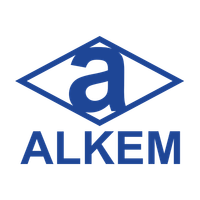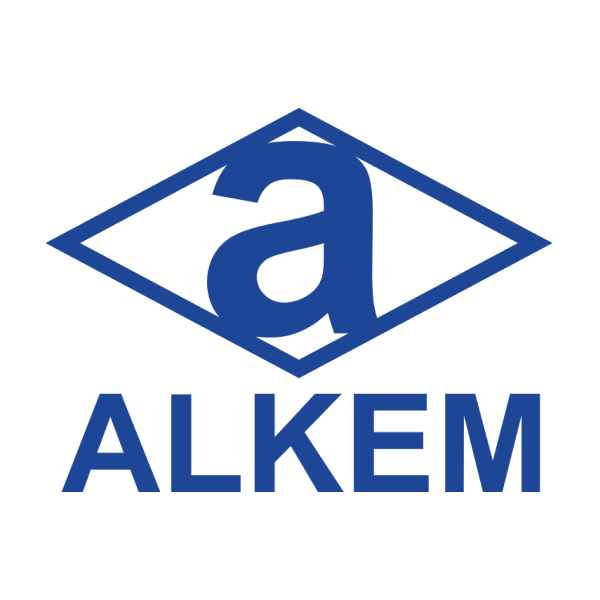
Alkem Laboratories Ltd
NSE:ALKEM


| US |

|
Johnson & Johnson
NYSE:JNJ
|
Pharmaceuticals
|
| US |

|
Berkshire Hathaway Inc
NYSE:BRK.A
|
Financial Services
|
| US |

|
Bank of America Corp
NYSE:BAC
|
Banking
|
| US |

|
Mastercard Inc
NYSE:MA
|
Technology
|
| US |

|
UnitedHealth Group Inc
NYSE:UNH
|
Health Care
|
| US |

|
Exxon Mobil Corp
NYSE:XOM
|
Energy
|
| US |

|
Pfizer Inc
NYSE:PFE
|
Pharmaceuticals
|
| US |

|
Palantir Technologies Inc
NYSE:PLTR
|
Technology
|
| US |

|
Nike Inc
NYSE:NKE
|
Textiles, Apparel & Luxury Goods
|
| US |

|
Visa Inc
NYSE:V
|
Technology
|
| CN |

|
Alibaba Group Holding Ltd
NYSE:BABA
|
Retail
|
| US |

|
3M Co
NYSE:MMM
|
Industrial Conglomerates
|
| US |

|
JPMorgan Chase & Co
NYSE:JPM
|
Banking
|
| US |

|
Coca-Cola Co
NYSE:KO
|
Beverages
|
| US |

|
Walmart Inc
NYSE:WMT
|
Retail
|
| US |

|
Verizon Communications Inc
NYSE:VZ
|
Telecommunication
|
Utilize notes to systematically review your investment decisions. By reflecting on past outcomes, you can discern effective strategies and identify those that underperformed. This continuous feedback loop enables you to adapt and refine your approach, optimizing for future success.
Each note serves as a learning point, offering insights into your decision-making processes. Over time, you'll accumulate a personalized database of knowledge, enhancing your ability to make informed decisions quickly and effectively.
With a comprehensive record of your investment history at your fingertips, you can compare current opportunities against past experiences. This not only bolsters your confidence but also ensures that each decision is grounded in a well-documented rationale.
Do you really want to delete this note?
This action cannot be undone.

| 52 Week Range |
4 616.35
6 366.25
|
| Price Target |
|
We'll email you a reminder when the closing price reaches INR.
Choose the stock you wish to monitor with a price alert.

|
Johnson & Johnson
NYSE:JNJ
|
US |

|
Berkshire Hathaway Inc
NYSE:BRK.A
|
US |

|
Bank of America Corp
NYSE:BAC
|
US |

|
Mastercard Inc
NYSE:MA
|
US |

|
UnitedHealth Group Inc
NYSE:UNH
|
US |

|
Exxon Mobil Corp
NYSE:XOM
|
US |

|
Pfizer Inc
NYSE:PFE
|
US |

|
Palantir Technologies Inc
NYSE:PLTR
|
US |

|
Nike Inc
NYSE:NKE
|
US |

|
Visa Inc
NYSE:V
|
US |

|
Alibaba Group Holding Ltd
NYSE:BABA
|
CN |

|
3M Co
NYSE:MMM
|
US |

|
JPMorgan Chase & Co
NYSE:JPM
|
US |

|
Coca-Cola Co
NYSE:KO
|
US |

|
Walmart Inc
NYSE:WMT
|
US |

|
Verizon Communications Inc
NYSE:VZ
|
US |
This alert will be permanently deleted.
 Alkem Laboratories Ltd
Alkem Laboratories Ltd
Alkem Laboratories Ltd
Investor Relations
Alkem Laboratories Ltd., founded in 1973, has emerged as a significant player in India's pharmaceutical landscape, deftly combining innovation with a robust distribution network. Anchored in Mumbai, Alkem began as a modest venture but quickly evolved into a powerhouse, renowned for manufacturing a broad spectrum of branded generics, over-the-counter products, and active pharmaceutical ingredients (APIs). The company's success lies in its ability to cater to both domestic and international markets, primarily thriving on the ever-increasing demand for affordable healthcare solutions. Its formidable market presence in India is supported by a strong sales force and an extensive distribution network, ensuring its therapies reach even the most remote corners of the country.
Internationally, Alkem has carved a niche for itself, with the United States being one of its major export markets. It strategically entered this competitive arena, building a portfolio of ANDAs (Abbreviated New Drug Applications) that allowed it to provide lower-cost alternatives to big pharma's patented drugs. This not only fueled its revenue growth but also fortified its standing as a go-to source for quality generics. Alkem's research and development efforts underpin its commitment to healthcare innovation, as it constantly seeks to expand its therapeutic repertoire. By consistently focusing on quality, affordability, and resourceful adaptation to global healthcare needs, Alkem Laboratories Ltd. has managed to script a growth story that is both impressive and sustainable.

Alkem Laboratories Ltd., founded in 1973, has emerged as a significant player in India's pharmaceutical landscape, deftly combining innovation with a robust distribution network. Anchored in Mumbai, Alkem began as a modest venture but quickly evolved into a powerhouse, renowned for manufacturing a broad spectrum of branded generics, over-the-counter products, and active pharmaceutical ingredients (APIs). The company's success lies in its ability to cater to both domestic and international markets, primarily thriving on the ever-increasing demand for affordable healthcare solutions. Its formidable market presence in India is supported by a strong sales force and an extensive distribution network, ensuring its therapies reach even the most remote corners of the country.
Internationally, Alkem has carved a niche for itself, with the United States being one of its major export markets. It strategically entered this competitive arena, building a portfolio of ANDAs (Abbreviated New Drug Applications) that allowed it to provide lower-cost alternatives to big pharma's patented drugs. This not only fueled its revenue growth but also fortified its standing as a go-to source for quality generics. Alkem's research and development efforts underpin its commitment to healthcare innovation, as it constantly seeks to expand its therapeutic repertoire. By consistently focusing on quality, affordability, and resourceful adaptation to global healthcare needs, Alkem Laboratories Ltd. has managed to script a growth story that is both impressive and sustainable.





























 You don't have any saved screeners yet
You don't have any saved screeners yet
